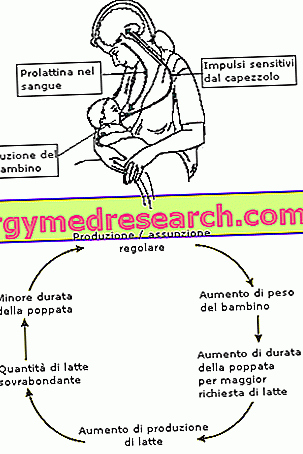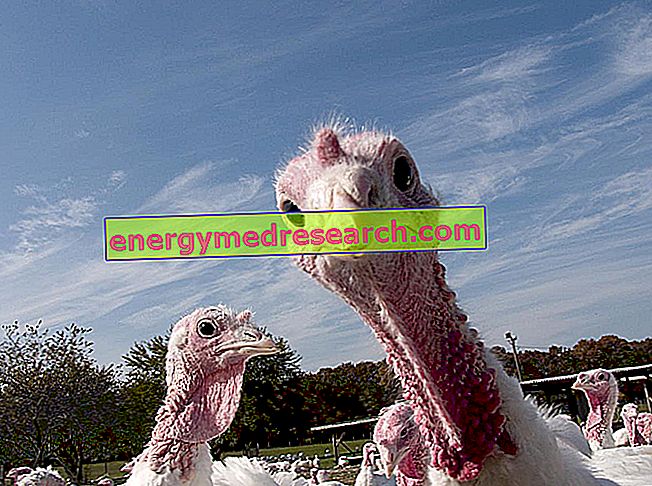Generality
Breast milk, produced and secreted by the mammary glands, is essential to ensure the right nourishment for the newborn.
Already during the last trimester of pregnancy, several pregnant women notice that from their breast, by squeezing, a watery and yellowish liquid comes out. This is colostrum, the first milk that the baby will drink in the course of life; a milk that is relatively low in fat and sugar, but particularly rich in mineral salts and gamma globulins (antibodies), which once absorbed in the intestine will guarantee the child a certain immunity from disease, at least until his immune defenses are adequately prepared.
How it is produced
The milk is produced by the two breasts, each of which contains a mammary gland consisting of several milk-secreting lobules and surrounded by contractile cells, which are important to facilitate emptying.
Already during the first months of pregnancy, these glands develop under the action of various hormones, basically estrogens (important already during puberty in determining the increase in breast volume). The ability to secrete is instead conferred by the increased levels of progesterone.

After giving birth - following the decline in the levels of estrogen and progesterone - the mammary gland begins to produce large quantities of milk, thanks also to the increased release of prolactin. The circulating levels of this hormone soar in response to sucking of the baby, benefiting from the mechanical stimulus produced by its mouth. This is why, in the presence of hypogalcium (insufficiency of milk secretion) of non-pathological origin, it is advisable to attach the baby to the breast at every meal rather than at alternate meals. Even the complete emptying of the breast, in fact, stimulates the milk secretion; on the contrary, the prolonged stagnation of milk inside the lobules tends to inhibit it. The fear of many mothers, according to which attacking the child often leads to the rapid exhaustion of milk, is therefore unjustified.
Types of milk
Already after 3-4 days, colostrum is gradually replaced with so-called "mature" milk, richer in lactose and lipids.
The actual milky whipping therefore occurs only a few days after the birth, often coinciding with the discharge of the woman from the hospital and her return home. It will be important for the mother to have been adequately prepared and informed about the management of breastfeeding (and the milk supply itself) so that it can be administered correctly even independently.
The milk is initially presented as a real breast edema, characterized by turgor, redness and pain in the breast. The milk does not come out immediately and the inadequately informed woman risks accumulating further anxiety. Then follows a phase of hyper-production of milk that exceeds the demands of the newborn but which must be managed (for example with massages and breast pumps) to avoid the onset of traffic jams and mastitis. Finally we will have the regularization of this process with a balance between production and consumption. The newborn attaches, sucks and empties the breast, automatically stimulating the milk to reproduce.
Oxytocin
In addition to prolactin, the presence of another hormone called oxytocin, which is also secreted by the anterior pituitary and stimulated by suction, is important for milk to exit the breast. Oxytocin, in fact, acts by promoting the contraction of the smooth muscles of the breast and the uterus. Its release, however, does not depend only on mechanical factors - such as sucking - but also on psychological stimuli, such as thinking of one's child or feeling crying.
Once started, milk production normally continues for several months, reaching a peak of secretion around the 6th - 7th month and then gradually decreasing until it stops between the 9th and 12th month. The volume of milk produced is independent of the shape and size of the breast.
| «Breastfeeding |  | Breast milk » |



